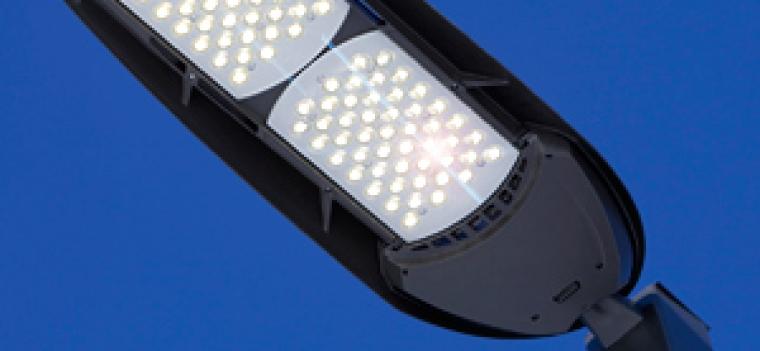News
- Public Procurement. Energy Efficiency. These are not terms that one normally sees together.
- Neither is a subject likely to keep many people awake at night.
- But taken together, they can be a powerful force for energy security, greenhouse gas mitigation, and low carbon development.
Public Procurement. Energy Efficiency. These are not terms that one normally sees together. And honestly, neither is a subject likely to keep many people awake at night. But taken together, they can be a powerful force for energy security, greenhouse gas mitigation, and low carbon development.
The logic is simple. Governments on average account for 2-5 percent of national energy use, and this can rise to 20-30 percent in countries with high heating demand or low electrification rates. Between 12 and 20 percent of a country’s gross domestic product passes through public procurement systems. On both the energy and the procurement sides, government actions matter, influencing private sector purchasing and individual decision-making. Technical specifications used by governments also send signals to suppliers about the types of goods and services that will be in demand, which in turn can influence the products they produce.
Countries increasingly see the public procurement of energy efficient goods and services as an opportunity to influence markets while creating consistent and stable demand for new and emerging technologies. And while energy efficient purchasing (EEP) is well established in many developed countries, the practice is growing rapidly as low and middle income countries integrate it into their energy security and green growth strategies.
"EEP programs have saved governments millions in energy costs. But most programs do not have explicit enforcement mechanisms to make sure purchases meet policy mandates, and only a few comprehensively track impacts or fully account for energy savings." | Jas Singh, Senior Energy Specialist, Europe and Central Asia Region, the World Bank
A new report from the Energy Sector Management Assistance Program (ESMAP) focuses on the product side of the EEP equation. Public Procurement of Energy Efficient Products: Lessons from Around the World looks at case studies from cities and countries with well-established EEP programs. Key findings from those experiences are presented with the aim of helping countries that are just getting started on their own programs. This publication complements another ESMAP report, Public Procurement of Energy Efficiency Services: Lessons from International Experience, published in 2010.
The report demonstrates how taking energy efficiency into account helps governments achieve a primary objective of public procurement: getting the best value for money. While some efficient goods have slightly higher costs, the reduction in energy expenses and longer product lifetimes make them more cost-effective in the long run. The report also details the range of EEP program models available to governments, including product labeling, publishing a catalog of technical specifications, life-cycle costing, and preferential treatment in procurement.
The direct benefits can be substantial. A mandatory green public procurement program in Vienna, Austria, started in 1999 and covering 23 categories of goods and services, has led to €17 million in annual savings and avoided 30,000 tons of CO2 emissions. Another green purchasing initiative in Mexico City established in 2011 has already offset the equivalent of 340 gigawatt hours a year of power generation.
With such clear advantages, why are EEP programs not more widely and firmly established? A couple of the major barriers identified by the report are a lack of incentives due to budgetary restrictions, and limited financial resources needed to pay for the higher upfront costs of efficient products. In some instances bureaucratic inertia or a resistance to changing long-established procedures may be at work. But in many cases the answer simply boils down to a lack of access to information about such programs – a gap this report is intended to fill.
“EEP programs have saved governments millions in energy costs,” said Jas Singh, Senior Energy Specialist at the Europe and Central Asia Region of the World Bank, and the lead author of the report. “But most programs do not have explicit enforcement mechanisms to make sure purchases meet policy mandates, and only a few comprehensively track impacts or fully account for energy savings.”
For countries just embarking on EEP programs, the report recommends starting with a voluntary program and a limited number of products. It also calls for investing in outreach to increase political buy-in as well as tracking and monitoring compliance to measure and report on results and participation rates. As experience is gained, policies can be made mandatory and new procurement methods can be tested.
The report also makes clear that the World Bank has a key role to play. International financial institutions (IFIs) provided $105 billion of financial support to developing countries in 2010 alone. The bulk of this went toward the purchase of goods and services. As the report states, this presents “a huge opportunity for leadership … Efficiency and other standards adopted by the World Bank and other IFIs can have a catalytic effect on global supply chains and manufacturing.”
To take advantage of this opportunity, the report recommends that the World Bank identify key efficient energy-using goods to be purchased as part of projects, such as office equipment, lighting, water pumps and vehicles. Project managers can then help local counterpart agencies to develop appropriate technical specifications, including energy efficiency performance requirements.
